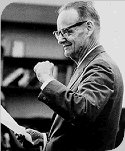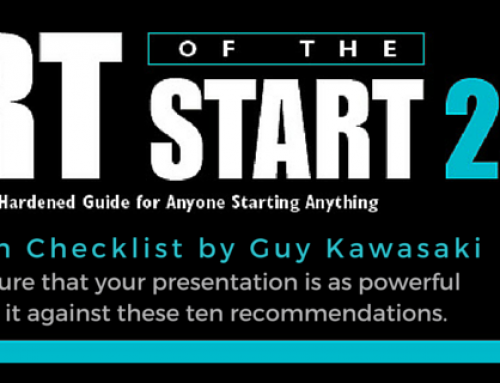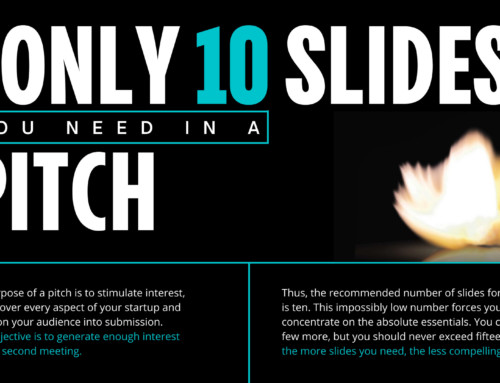Harold Keables taught me how to write. He was my English high-school teacher in the early seventies (1970s, not 1870s). I wasn’t that great a student, so he’s probably having a good laugh in heaven watching me write books and blogs.
Mr. Keables used Good Writing: An Informal Manual of Style when I was in his class. While poking around my old school’s web site, I discovered that Dr. Michael LaGory, another teacher at the school, wrote The Keables Guide after Mr. Keables passed away. The book reflects the writing philosophy and teaching method of Mr. Keables.
If you’re interested in writing, I’d highly recommend that you read it. And who doesn’t need to write? Letters, emails, pitches, business plans, articles, web-site content, or, God help you, a blog are all forms of writing. The Keables Guide is in the same class as The Elements of Style and If You Want to Write.
In short, his methodology was to mark up our writing with his red pen, and then we would have to write the original sentence, cite the rule that we broke, and correctly re-write the sentence. Trust me when I tell you that we learned grammar very quickly. :-)
Here is an example of the rules that Mr. Keables evangelized. To this day, this anti-passive rule, well, rules my writing. For example, in the final drafts of my book, I search for every instance of “by” and “be” to look for places that I can eliminate the passive voice.
PV: change passive voice to active. Many passives are easy to correct; just find the thing that is taking the action and make it the subject of the verb:
PASSIVE VOICE: The food is eaten by me.
ACTIVE VOICE: I eat the food.
Often, however, passive voice has no “by” phrase because it is disguising unclear thinking which fails to identify exactly who is doing what to whom:
VAGUE: The ideas are shown using imagery.
CLEAR: Frost uses images to show the ideas.
VAGUE: Without care, errors are made.
CLEAR: Careless writers make errors.
VAGUE: It is felt you are wrong.
CLEAR: I feel you are wrong.
Grammar Tip: The passive voice is useful when you want to emphasize the recipient of the action: “The bridge was constructed quickly.” Usually, however, passive voice is less concise, energetic and natural than active voice. Suppose Dr. King had said, “A dream is had by me.”
Thank you, Mr. Keables, for forcing your system down my throat.






Thanks for posting this, Guy. Looks like a great resource.
Looks like a fantastic resource. I hope it becomes easier to navigate.
Thanks for the post Guy.
This is a great resource but needs to be reorganized and redesigned so that there is a heiarchical document structure. The navigation is a mess and pages are not sequential.
If Keables had understood HTML, he would be very cross.
I would say that this is a project for a standards based, HTML programmer.
Hmmmm…
*****************
Jay,
Here’s your chance to change the world!
Guy
Guy,
The resource is very helpful. Mr Keables must be proud of you. I searched your name in your school’s website search engine,by using your first name. I found your name together with a lot of people with their first name Guy . However, I noted that you didnt provide your email to the webmaster.
Thank You, I will truly benefit from Mr. Keables
Guy,
Thank you so much for sharing the legacy of Harold Keables to a new generation. As a former Keables student (and current Iolani School math teacher) I can attest that his influence was broad in his 30+ years at South High School in Denver and in his 15 years at Iolani School in Honolulu, and it is still being felt today through articles like yours.
As to the Guide, readers should understand that the electronic version is a transfer of the in situ hard copy version. It was designed for students to look up a broken rule that a teacher cites and codes on the student’s paper. Therefore, its use is optimized when a teacher (or editor) tells you exactly what you’ve done wrong, and the Keables Guide will tell you why. The electronic version was intended for quick student use at home or any remote site like a terminal in our computer rooms.
However, in some ways, the hard copy is better for doing the reverse, i.e. browsing for a rule or searching for examples. The electronic version is indeed, a little clumsy when used in this manner and would require as suggested, some rethinking in hierarchical programming.
Any html gurus up for the challenge? Contact Guide author Dr. Michael LaGory on the Iolani School website for more information. By the way, since Mr. Keables died in 1982 at age 82, it would be indeed interesting to consider him understanding html — he never even learned how to drive a car!
Guy:
Great resource on posting Mr. Keable’s legacy to you and others that went thru his classroom. In terms of the navigational feedback, seems like most forgot the intent of the resource. I’ve added it to my favorites and will share with anyone interested in becoming a better writer.
Every time I go to a football match, I hear over the loudspeaker “footballs are not permitted to be kicked on the concourse” (like the footballs have some say in it!) I curse the passive voice – Mr Keables was right.
Good post, Guy. You can find more tips like this if you google on ‘plain English’. This page offers as good a guide as any: http://www.askoxford.com/betterwriting/plainenglish/
It seems to me that Guy’s style uses other plain English tips:
* prefer short and simple words to long ones, e.g. use not utilise
* short sentences
* bulleted lists – like this one – not lists separated by commas.
And so on!
I must also thank Iolani for teaching me how to write. Teachers like Dr. LaGory are why public school teachers in Hawaii send their kids to private school.
As a student of Mr. Keables in the late 50’s at South High School in Denver, I wish I had paid more attention.
Keables was tough, demanding and frank. Your posting some of his guidelines has dusted off some old memories.
My English links
For folks, like me studying English and willing to improve it, I list a few links I found useful: The elements of style by William Strunk, Jr. – probably the classic on English style and grammar. A must read for
My English links
For folks, like me studying English and willing to improve it, I list a few links I found useful: The elements of style by William Strunk, Jr. – probably the classic on English style and grammar. A must read for
Great post – I’ve marked in my “favs”…thanks for sharing! Stacy
Nice thoughts on Harold Keables.
He’s my favorite high school teacher.
I was with him at South High about 1955.
He touched a lot of folks.
Paul
Everything You Wanted to Know About Getting a Job in Silicon Valley But Didn’t Know Who to Ask
by: Guy Kawasaki Many people ask me for advice about getting a job in Silicon Valley, so heres the inside scoop. Not everyone will agree with this advice, and some will outright deny what Im saying, but if you use…
Thanks for sharing. However the link to The Keables Guide doesnt seem to work – could you put up a new one.
Hey,
Thanks so much for this post. I think this is a great tribute to the late Harold Keables. The examples you added to the bottom regarding vague and passive voice were also very helpful.
Best,
Dennis